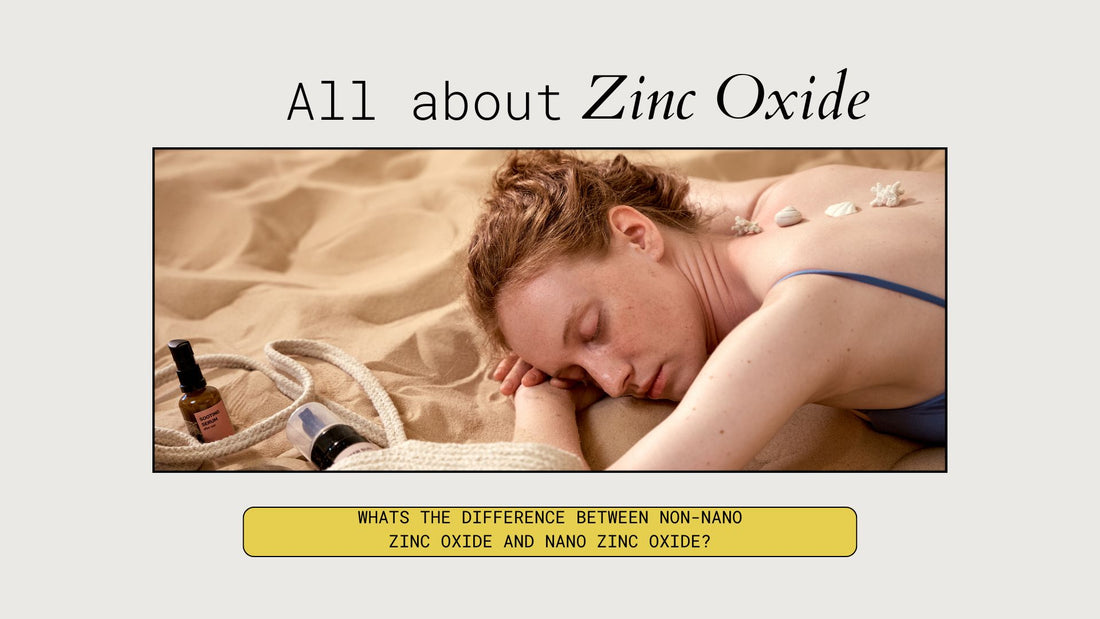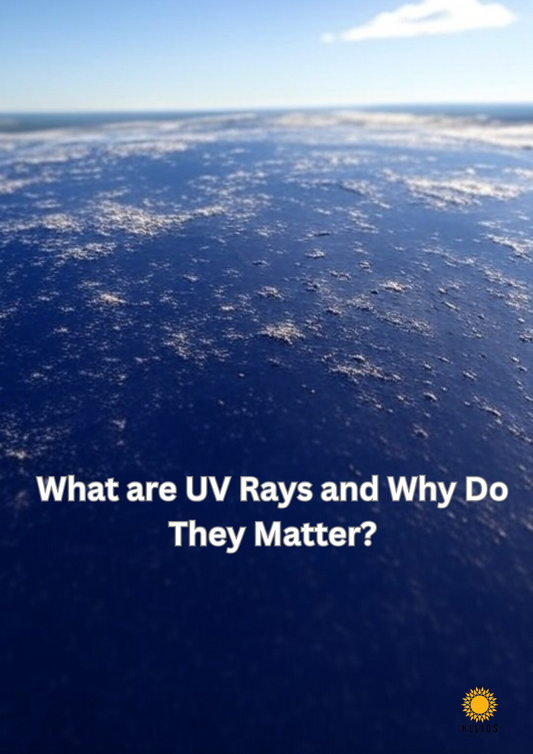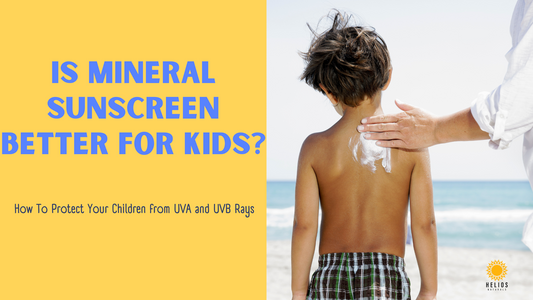
What is the difference between Non-nano Zinc Oxide and Nano Zinc Oxide?
Share
What's the difference between nano-zinc oxide and non-nano zinc oxide sunscreens?
Did you know after just two hours, nano zinc oxide sunscreens lose effectiveness and become toxic?
A recent study from Oregon State University, showed nano zinc oxide may not be a great alternative to chemical sunscreens after all.The team performed a toxicity analysis using various zinc oxide mixtures on zebrafish, which are surprisingly close to humans in molecular, genetic, and cellular makeup. They found that the UV exposed mixture containing nano zinc oxide were toxic to the zebrafish.
What the public thinks about sunscreen safety ultimately dictates how ingredients are regulated for sunscreen manufacturers. It will be interesting to see if nano zinc oxide will follow the same fate as oxybenzone following the results of this study.
What is nano zinc oxide?
Nano means that a particle is smaller than 100nm, since it’s so tiny it must be measured in nanometers, which equals one nanometer equals one billionth of a meter.
Due to its miniscule size,nano zinc oxide can be absorbed into the bloodstream . Not only does nano zinc oxide bleach coral reefs it can also affect human health, just like chemical UV filters.
Nano zinc oxide is common in beauty products and sunscreens because it leaves less of a white caste on your skin compared to non-nano counterparts.
What is non-nano zinc oxide?
Non-nano means that a particle is greater than 100nm. Since non-nano is larger than nano zinc oxide, it does not penetrate your skin barrier. This makes it the safest option for sun protection for both sea life and human beings.
Non-nano zinc oxide has not been shown to harm marine wildlife or be toxic. However, it does leave a less desirable white cast when it’s used.
How does nano zinc oxide sunscreen harm marine life?
Once you apply chemical or mineral sunscreens, it will begin to dissolve in the sea water. Coral reefs, like humans, can absorb nano zinc oxide resulting in bleaching.
Once the nano zinc oxide particles are released into the water column, they do not degrade. Instead, they persist and continue to cause chain reactions to marine life.
The bioaccumulation causes smaller species affected to travel up the food chain, eventually back to humans. Similar to microplastics.
Is Non-Nano Zinc Oxide Reef Safe?
Yes, non-nano zinc oxide and titanium oxide are both reef safe. Keep in mind the term “reef safe” is not regulated and that label can be used loosely. The tourism board of Hawaii has a pretty comprehensive list of what makes a reef safe sunscreen, here.
Your best bet is to check the ingredients and ensure there's no reef-harming chemicals included and the formula contains non-nano zinc oxide as the only active ingredient.
Any chemical sunscreen with avobenzone, oxybenzone, homosalate, or octinoxate is not reef safe.
What’s your best bet with zinc based sunscreens?
Nano zinc oxide based sunscreens lose their effectiveness after just two hours and pose significant long-term health risks. It’s simply not worth the risks.
If you have sensitive skin, the best kind of zinc oxide for you is ideally non-nano zinc oxide. It helps protect yourself from irritation and avoids harming marine life.
For the environmentally conscious consumer or someone with sensitive skin, you should avoid chemical based sunscreens with nano zinc oxide and opt for mineral based sunscreens instead.



